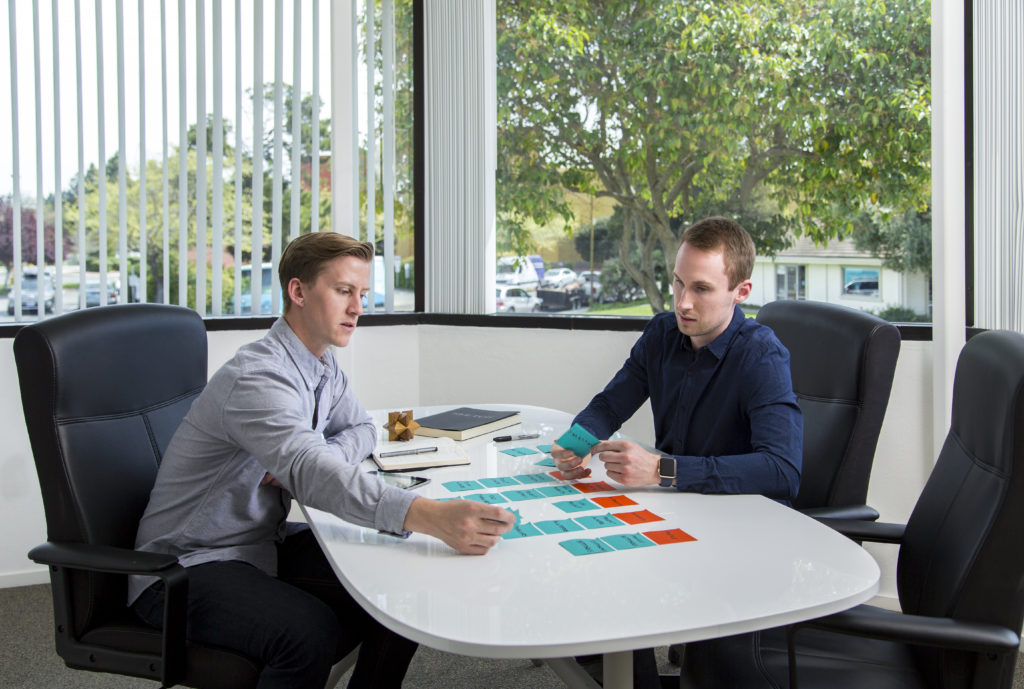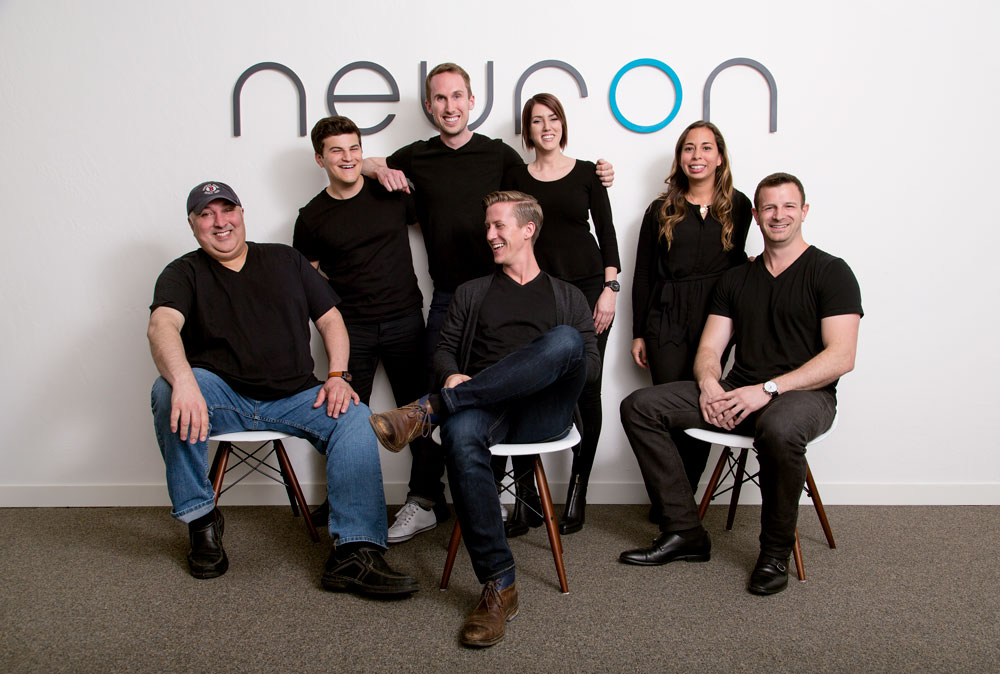Northeastern University alumni Chris Marciano, Ryan Matthew, Mark Munroe, and Matt Stoner took their Architecture capstone project first to the 2014 RISE awards (where it was awarded a $1,000 grand prize) and then used their research and successful collaboration to launch Neuron, an innovative company focused on user experience.
As they explain it, their goal is to “apply the rigor and the level of documentation that is standard practice in the field of architecture to the design of digital products and services. We do this by creating a ‘UX Architectural Guide’ – a specification that gives the client a clear picture of the user experience and interaction model of a digital product before they spend a single minute coding.”

In just two and half years, the San Francisco-based company has already worked with over 30 clients on a wide range of projects, from designing enterprise software and mobile apps to blockchain applications and conversational interfaces.
We had the opportunity to catch up with the Neuron team. Read more about their mission, accomplishments, and what they are looking forward to in 2019, below!
TELL US ABOUT Neuron’s mission
We strive to design experiences that are not only intuitive and engaging, but also deliver measurable results for our clients. We push the envelope of design, and then we push some more.
What are a few of your major accomplishments so far?
Neuron has created digital experiences and solutions for a variety of forward-thinking companies.
For the smart home company Vivint, we created an gamified sales portal for their B-to-C sales team. The software we designed prominently features elements of gamification through a variety of challenges and mini-games that the salespeople can take part in. By taking this novel approach we were able to make the sales process more exciting and rewarding.
Our largest project to date is a humanitarian platform called Projects for Good. The purpose of this website is to take traditional crowdfunding one step further by providing users with the tools and resources they need to see humanitarian projects through from fundraising to completion regardless of where they may be in the world.
Since opening our San Francisco office, we have been working on an exciting new product in the educational space. The goal is to teach native Chinese speakers English through a fun and interactive mobile app that encourages daily engagement.
These are the types of challenges that get us thinking in new ways and allow us to explore our creativity while creating products and services that provide a tangible ROI for our clients.
any major goals for 2019?
With our background in the design of physical spaces, we would like to take on more UX projects that bridge the digital and physical worlds.
What has been your secret to success?
We apply the rigor and the level of documentation that is standard practice in the field of architecture to the design of digital products and services. We do this by creating what we call the UX Architectural Guide – a specification that gives the client a clear picture of the user experience and interaction model of a digital product before they spend a single minute coding.
Tell us about your journey from Northeastern / RISE:2014 to Neuron.
Northeastern is a great place to study architecture, particularly because of its interdisciplinary opportunities. When working on the research for our RISE:2014 project, we were able to draw from the expertise of architecture professors Tim Love and Dan Adams as well as that of Barry Bluestone, an economist at Northeastern’s Dukakis Center. Their collective wealth of knowledge was a major contributing factor in our research receiving the Innovation award at RISE:2014.
As we shifted our focus to user experience design, we maintained many of the lessons learned at NU. Keeping an interdisciplinary mindset, we always take into account multiple personas and stakeholders when designing digital experiences. For Neuron, it is not enough to create something that is aesthetically beautiful or purely functional, it must also lead to a measurable ROI for the client.
To learn more about Neuron, visit their website at www.neuronux.com


